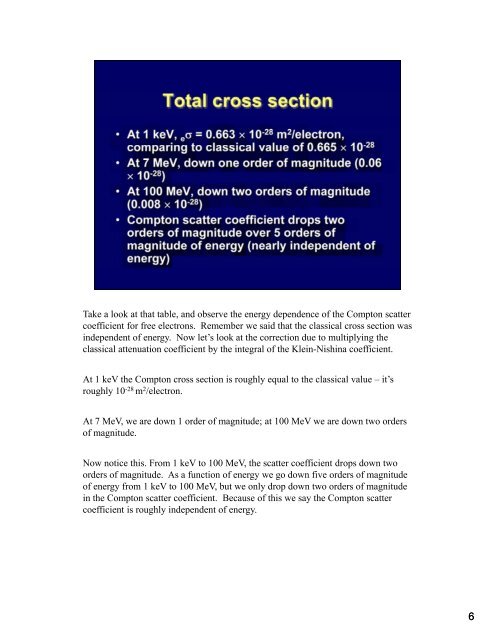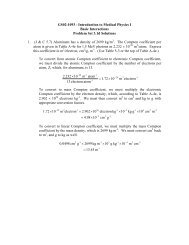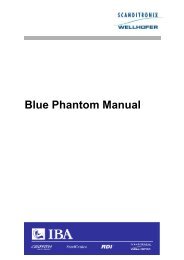link to lecture transcript - UT-H GSBS Medical Physics Class Site
link to lecture transcript - UT-H GSBS Medical Physics Class Site
link to lecture transcript - UT-H GSBS Medical Physics Class Site
You also want an ePaper? Increase the reach of your titles
YUMPU automatically turns print PDFs into web optimized ePapers that Google loves.
Take a look at that table, and observe the energy dependence of the Comp<strong>to</strong>n scatter<br />
coefficient for free electrons. Remember we said that the classical cross section was<br />
independent of energy. Now let’s look at the correction due <strong>to</strong> multiplying the<br />
classical attenuation coefficient by the integral of the Klein-Nishina coefficient.<br />
At 1 keV the Comp<strong>to</strong>n cross section is roughly equal <strong>to</strong> the classical value – it’s<br />
roughly 10 -28 m 2 /electron.<br />
At 7 MeV, we are down 1 order of magnitude; at 100 MeV we are down two orders<br />
of magnitude.<br />
Now notice this. From 1 keV <strong>to</strong> 100 MeV, the scatter coefficient drops down two<br />
orders d of f magnitude. it d As A a function f ti of fenergy we go down d five fi orders d of f magnitude it d<br />
of energy from 1 keV <strong>to</strong> 100 MeV, but we only drop down two orders of magnitude<br />
in the Comp<strong>to</strong>n scatter coefficient. Because of this we say the Comp<strong>to</strong>n scatter<br />
coefficient is roughly independent of energy.<br />
6





